Do you want to learn more about your WordPress site translation? Great call! Reaching an international audience will likely increase your website’s traffic and sales and establish meaningful connections with diverse cultures worldwide.
The thing is: simply translating content isn’t enough to effectively engage international users. If you aim to deeply resonate with their culture and preferences, localization may be your strongest option.
Localization goes beyond simple translation, it involves cultural adaptation and advanced customization to strongly engage international visitors.
The question is, how do you do it right? What are the best practices to follow, and which multilingual WordPress plugins are available on the market to properly localize your wordpress website?
Well, stay with us because we answer everything in this post!
What is WordPress Localization?
WordPress localization means tailoring your website to match the cultural, linguistic, and regional preferences of international audiences.
It involves adapting the whole website to the country or the language you are about to expand into. For example, localization includes translating SEO metadata, and adjusting images and graphics, layouts, and designs according to the local preferences of your target market. It also aims to adhere to local regulations to create a seamless user experience for your international audience.
To illustrate the concept of localization, let’s compare two versions of Lancome’s website: lancome.fr (tailored for French users) and lancome.ae (tailored for users in Dubai). Lancome demonstrates both translation and localization efforts on these platforms:
On the French website (lancome.fr):
- Emphasizes spring colors like pink and white.
- Offers promo codes themed around happiness and renewal for the spring season.
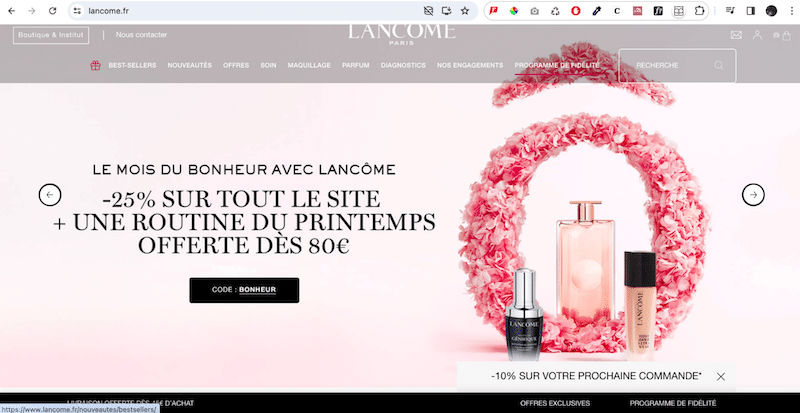
On the UAE website (lancome.ae):
- Introduces a dedicated page titled “Ramadan” in the menu, catering to the local culture and observances.
- Adjusts imagery to reflect Ramadan, featuring symbols such as a moon with the Ramadan spirit, thereby demonstrating a nuanced understanding of local customs and values.
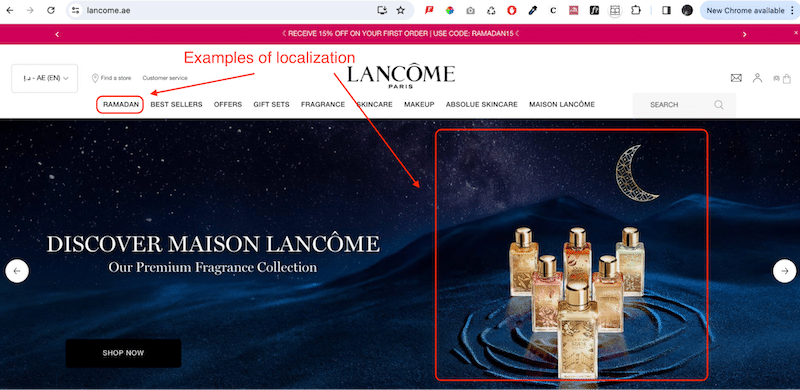
Internationalization vs Localization
Internationalization focuses on preparing a website for localization by making it adaptable to different languages and regions. Localization goes deeper and delves into the actual customization and adaptation process.
Translation vs Localization
Translation focuses on textual elements, while localization transforms the entire website or content from one language to another, including images, new layouts to welcome the translated content, SEO metadata, dates, phone numbers, etc.
Why should you localize your international WordPress website?
Localizing your international WordPress site offers three main benefits that can significantly enhance user engagement and drive business growth:
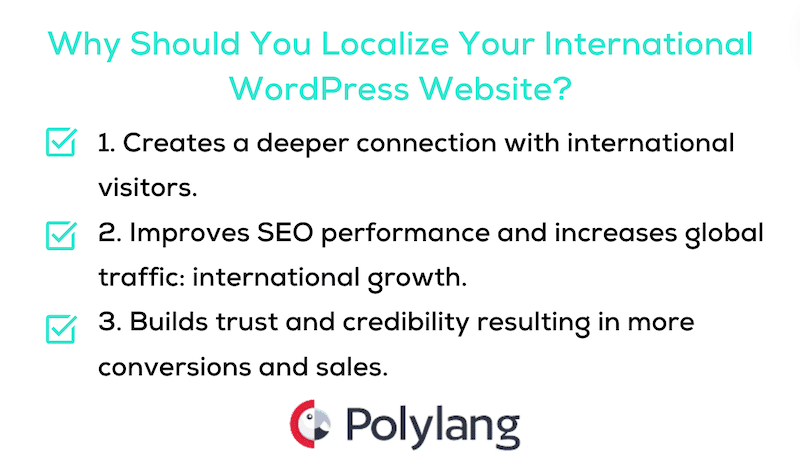
- Deeper connection with international visitors: Localization tailors your website to the linguistic, cultural, and regional preferences of diverse audiences, resulting in a more user-friendly experience.
- Improves SEO performance and increases global traffic: Localized websites are more likely to rank higher in search engine results pages (SERPs) for relevant keywords in various languages. You’ll expand your website’s reach and attract users from different regions and language backgrounds.
- Builds trust and credibility resulting in more conversions and sales: Providing content in the language and format preferred by your target audience demonstrates your commitment to meeting their needs, fostering trust and credibility. By addressing the specific needs and preferences of different markets, localization can lead to higher conversion rates and increased sales revenue.
WordPress localization good practices
To conduct an effective WordPress localization, it requires adherence to six best practices, namely:
- Understand the cultural nuances, habits, and customs of the target audience: Conducting in-depth cultural research before expanding into new markets is essential. The goal is to make sure that text and visual elements are culturally relevant and appealing to the new market you are about to enter.
KFC serves as a brilliant example of product localization, particularly in its thorough understanding of the Thai market. In Thailand, they have crafted a tailored menu featuring rice and green curry, yet this offering is not available in France.
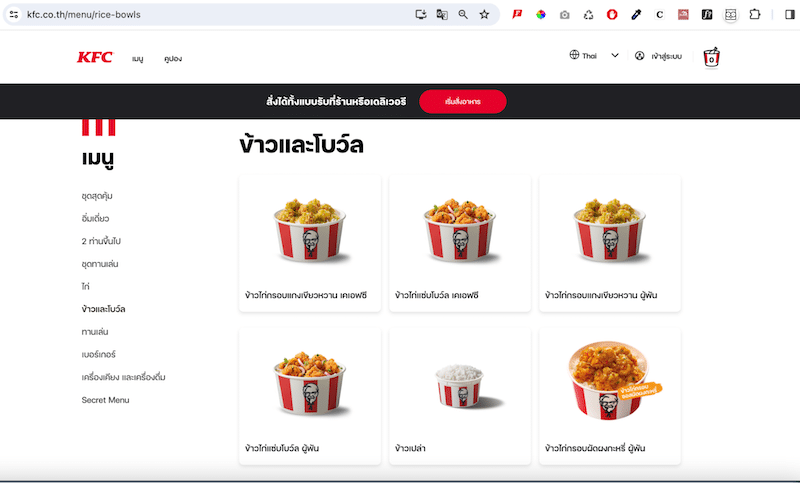
- Adapt content and tailor the whole marketing message:Customize language, imagery, and tone to reflect the preferences and behaviors of local consumers. Understanding your market is essential.
For instance, if you’re selling clothes in France, you’d likely emphasize spring products around March. However, if you’re considering expansion to Australia, where autumn begins around the same time, you’d want to focus on conveying the message that you offer warm clothing suited for that market.
Here’s an example of the Roxy brand adapting its web content to the Northern vs Southern Hemisphere seasons. This ensures that their offerings are relevant and appealing to customers based on their respective climates and seasonal preferences.
| Roxy France showcasing swimsuits (Spring season) | Roxy Australia showcasing fleece and cozy jumpers (Autumn season) |
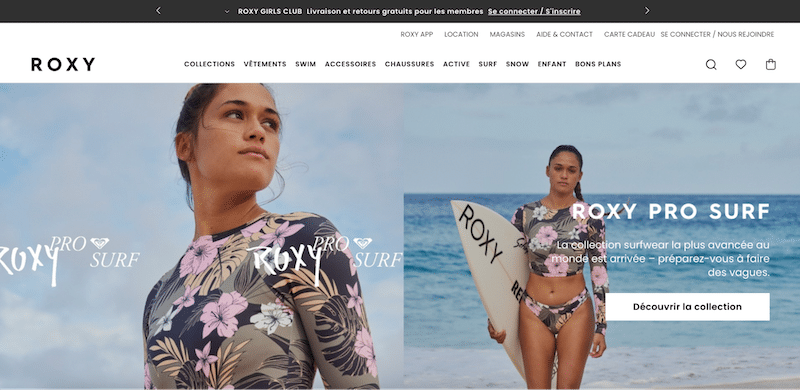 | 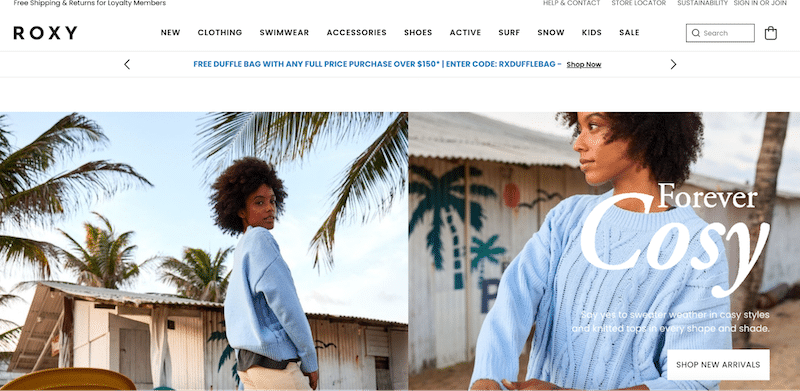 |
- Convert prices and measurements to local currencies and units: Displaying prices, sizes and measurements in familiar formats enhances user comprehension and trust.
As an example, Skyscanner, a flight comparison site, implements localization by providing various languages and local currencies tailored to different nationalities and regions:
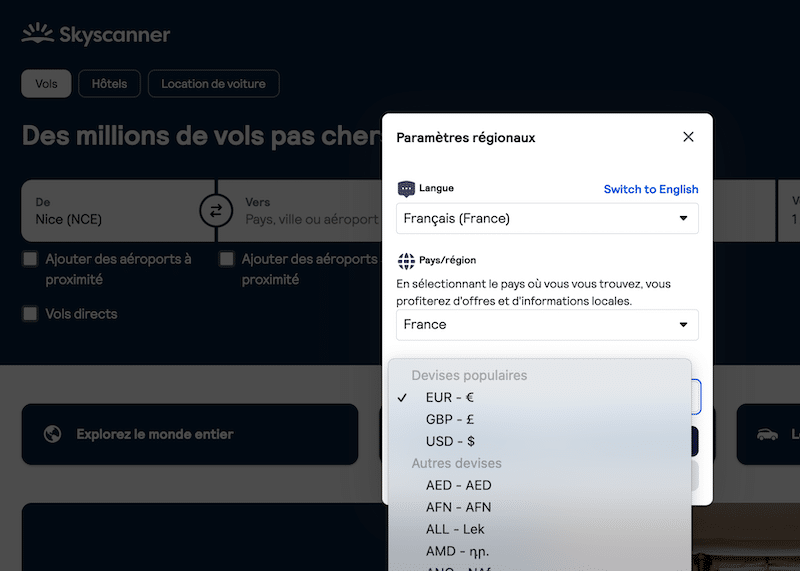
- Adhere to local conventions for dates, addresses, and phone numbers: Using the appropriate formats for contact information ensures clarity and professionalism.
For dates, The United States stands out as one of the few countries utilizing the “mm-dd-yyyy” date format, a practice that distinguishes it from the global standard.
In most countries, the day is typically written first, followed by the month and then the year (“dd-mm-yyyy”).
Nations like Iran, Korea, and China adopt a format where the year precedes the month and day (“yyyy-mm-dd”).
Here’s a graph that summarizes the convention for dates:
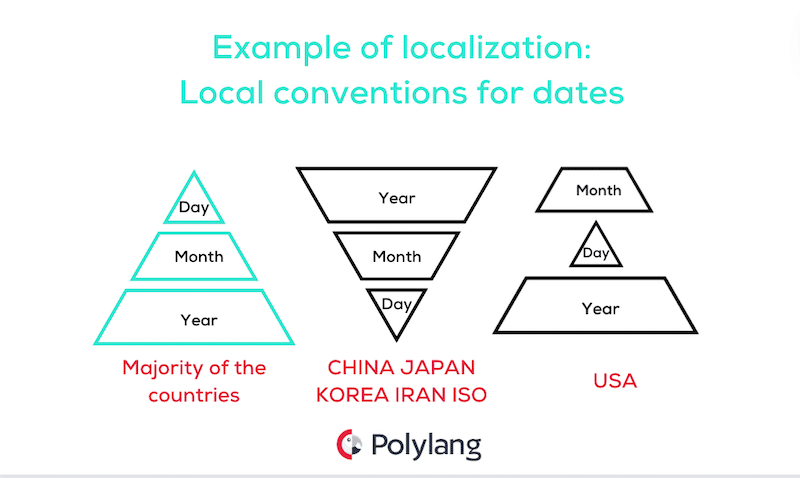
- Conform to local laws and regulations: For instance, in the European Union (EU), websites need to adhere to GDPR, while in the United States, compliance with laws like the California Consumer Privacy Act (CCPA) could be necessary.
- Offer customer support in the local language: When localizing your website, it’s essential to ensure that customer support is also available in the targeted language. Offering assistance in the native language of the target audience improves user satisfaction and fosters loyalty.
By meticulously addressing all of these localization aspects, you can create a truly immersive and user-centric experience for your international audience. Now that you know what localization is, let’s see how to implement this strategy with a multilingual WordPress plugin like Polylang.
Polylang: a comprehensive solution for WordPress localization
Polylang is the simplest multilingual plugin for WordPress, with over 800,000 active installations and a satisfaction rating of 4.7 out of 5. This plugin offers users both machine translation through integration with Deepl and manual translation options, ensuring flexibility and accuracy in content localization.
If you want to implement localization on your online store, Polylang provides a full dedicated add-on specifically designed for WooCommerce.
With Polylang, users can effortlessly translate their websites and online stores to reach a broader audience while maintaining high standards of quality and user experience. Let’s go over each feature to see how localization can be done with Polylang.
1. Install Polylang
Polylang is a powerful plugin that simplifies the process of localizing your WordPress website. Install the Polylang plugin from the WordPress repository and activate it.
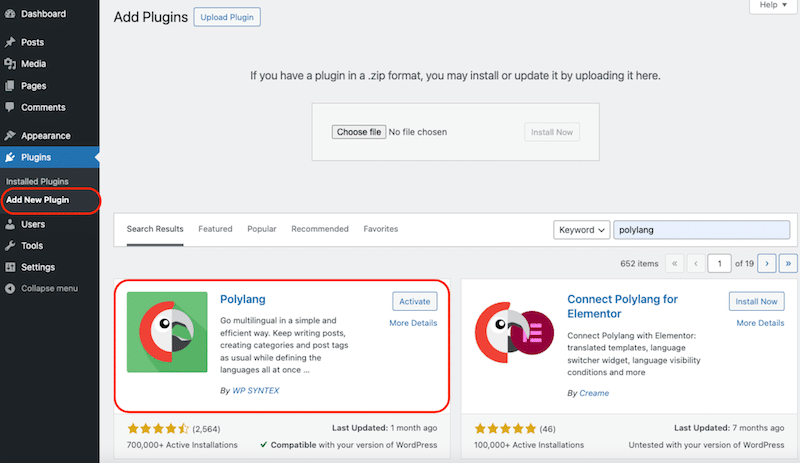
2. Translate Content
With Polylang, you can translate and localize every aspect of your website, including pages, posts, Custom Post types, tags, categories, and menus.
Polylang provides both manual and machine translation options, leveraging Deepl integration.
| 📌 Note: you’ll need Polylang Pro to have access to the machine translation. |
Users have access to machine translation capabilities, complemented by the option to manually edit the content afterward.

Design localization: changing the design according to the language
Polylang offers the flexibility to fine-tune the design of your website based on each language.
In addition to modifying content, you can personalize every facet of the design, such as colors, button styles, and layout arrangements.
This enables you to craft unique designs using the WordPress Editor or popular page builders for each language version.
| 🌍 With Polylang, you have the power to adapt the visual aesthetics of your website to align perfectly with the preferences and cultural norms of your audience. This tailored approach enhances user engagement and satisfaction across all language variations. |
🛠️ On a more technical note:
You can also leverage Polylang to apply different stylesheets for each language on your WordPress websites. This approach enables developers to localize the design and appearance of the website according to each language.
- Name stylesheets according to the language code (e.g., en_US.css, fr_FR.css, ar.css).
- Place them in the theme directory.
- WordPress will automatically load the appropriate stylesheet based on the selected language.
Note that you still have to keep the main style.css file.
Localizing WooCommerce
For WooCommerce users, Polylang has a dedicated add-on called Polylang for WooCommerce and offers seamless translation for products, shop pages, carts, and more, allowing for comprehensive localization of your online store.

As mentioned earlier in the best practices section, localizing an online shop requires providing currency options for different regions. To localize your WooCommerce currency switcher you can use the premium version of the Curcy-multicurrency for WooCommerce plugin, which is compatible with Polylang. This plugin allows you to specify which currency to use based on the selected language, providing a fully localized shopping experience.
Additionally, Polylang allows you to translate your shop page, cart, and checkout page effortlessly.
| 📘 Want to learn more about how to make WooCommerce multilingual?Check our dedicated guide where we explain how to create a multilingual store with Polylang and WooCommerce. |
Localizing Menus
With Polylang’s menu translation feature, you can add custom elements to each menu per language. For instance, you can include “winter sale” if you’re targeting countries where winter is beginning, or “Sales” to coincide with national sales events.
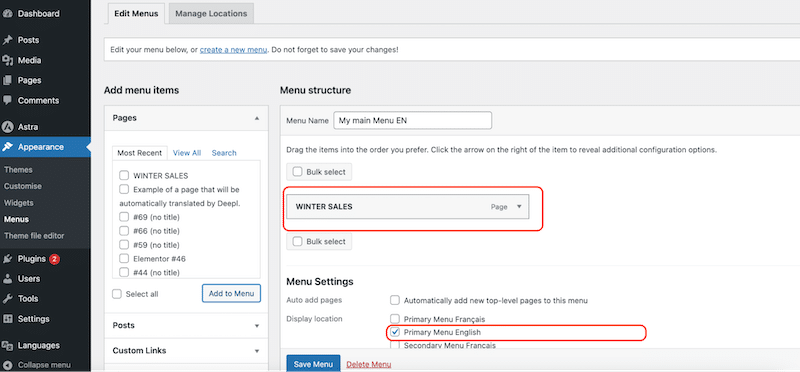
3. Translate Media files
Polylang allows you to translate media files and all the information such as images and videos, ensuring that your multimedia content resonates with diverse audiences across different languages and regions.
You can set the ALT text, the caption, description for each language:
| Image in French | Image in English |
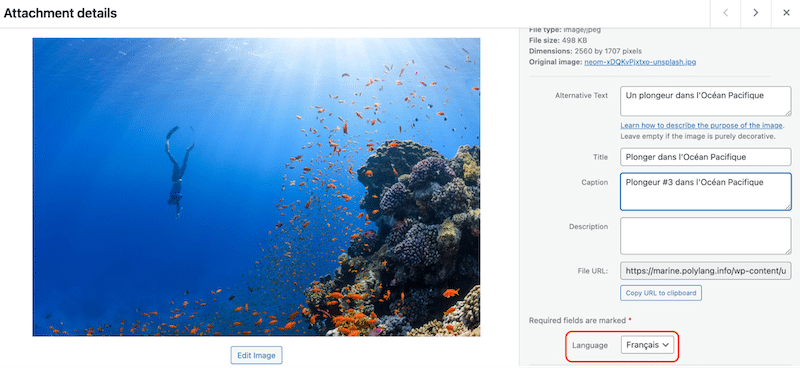 | 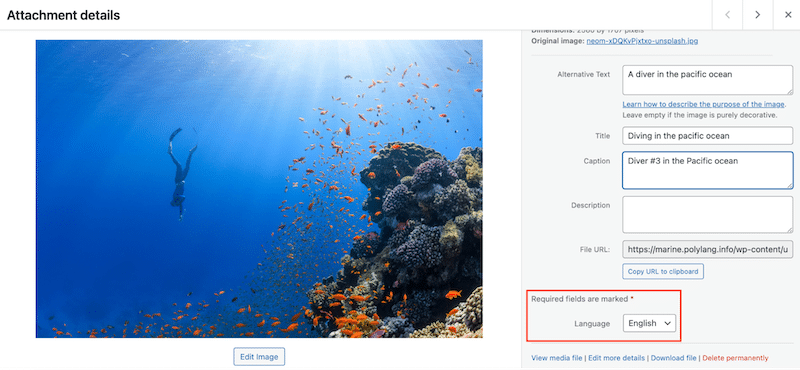 |
With Polylang, you also have the flexibility to change images according to the targeted language. This means that if you wish to feature a different hero image, for instance, on your French and American sites, it’s entirely possible. Polylang empowers users to tailor visual content specifically to each language making localization very easy.
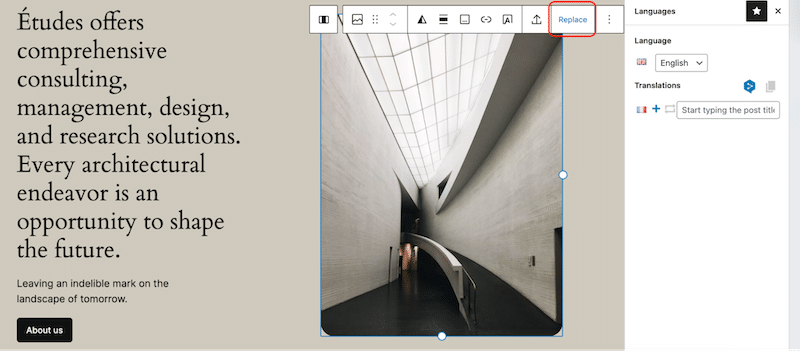
4. Adapt Your SEO Settings
Polylang allows you to translate and personalize your SEO settings for each language version of your website, optimizing visibility and rankings in search engine results pages (SERPs) across diverse regions.
For instance, Polylang seamlessly integrates with Yoast SEO, ensuring full compatibility and enhancing your website’s search engine optimization efforts.
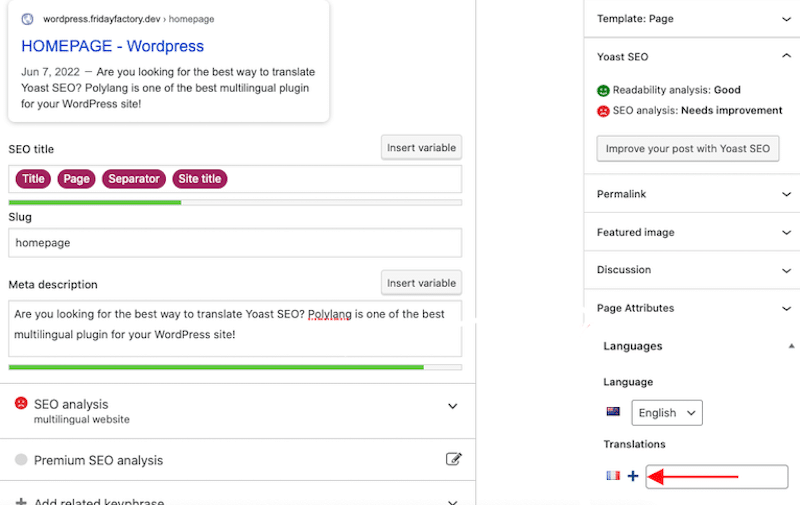
5. Translate Plugins and Theme
With Polylang, you can effortlessly translate plugins and themes to ensure consistency and functionality throughout various language versions of your website. Additionally, Polylang is fully compatible with Loco Translate, offering seamless integration for even smoother translation of your theme or plugin.
Conclusion
WordPress localization is a crucial aspect of expanding your website’s reach and engaging with a global audience effectively.
To achieve localization success, it’s essential to go beyond mere translation and ensure that your site resonates with each target market culturally and functionally.
Polylang emerges as your best ally offering seamless translation and localization capabilities without compromising site performance. By following the WordPress admin workflow, Polylang integrates seamlessly into your site, providing an intuitive experience.
Take the first step towards localization by trying Polylang today, it’s free so you don’t take any risks. For those looking to delve deeper into localization, Polylang Pro offers advanced features, WooCommerce integration, and machine translation.